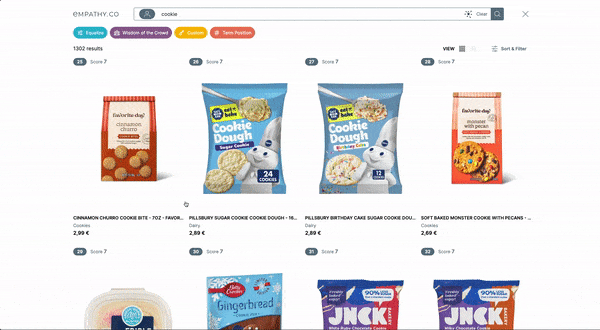Getting the Gist of the DailyDist
Getting the Gist of the DailyDist
Last month, we reviewed the main search KPIs for measuring your search performance. In that post, we saw how the EmpathyBroker Stats API c ollects all the data necessary to generate meaningful visualisations, facilitating your search reporting tasks.
The Stats API is able to generate
several reports
for different approaches or analytic intentions. Whether you’re looking at things from a query perspective or analysing user-centric metrics, Stats API covers all events that take place under the search experience. These reports are automatically connected with your EmpathyBroker Playboard. That’s where you have a complete overview of your search performance and insights.
This month, we’ll be taking a look at how you can generate one of the most popular reports available through the EmpathyBroker Stats API, the DailyDist Report.

What is the DailyDist Report?
T he Daily Distribution Report is one of the most frequently requested and most commonly used reports that the Stats API generates. It r eturns a set of global metrics, (for example queries_data , clicks_data or no_results_data ), providing distribution values that are broken down by day over a selected date range. All of this information is easily accessible for anyone who calls the EmpathyBroker Stats API using Postman .
The DailyDist report is great for gathering any specific data you might need for your search performance analysis. This report is easily extractable and configurable, allowing you to apply filters that narrow down your data. You can use the DailyDist to pretty much produce any kind of report you could need or to check a specific behaviour filtering by device, language or site.
How do I get access to Stats API Reports?
The first thing you’ll need to do is download
Postman
. Then, you will need to fill out the ‘Authorization’ tab in the application’s main view. You’ll need to add an authorisation token. You can obtain one of these by following these
instructions
.
Select ‘Bearer Token’ from the ‘Type’ dropdown menu, then copy and paste your token into the relevant field. You’re now ready to access any data or metric you need from the Stats API.

How do I configure my DailyDist Report?
You need to make sure your URL field is set up as ‘GET’ and that the following URL is applied when drawing up your data requirements:
 On the ‘Params’ tab you can define your desired parameters, such as date range, language, store, and scope (device type).
See here for common parameters
that can be used to define your data requirements.
On the ‘Params’ tab you can define your desired parameters, such as date range, language, store, and scope (device type).
See here for common parameters
that can be used to define your data requirements.

How do I export my data?
Results are automatically populated in JSON format and are ready to be downloaded using the ‘Download’ button. For an example,
follow this link
. Click expand source at the bottom of the page to see a sample response.

You can also export the results in CSV format by adding the format as a URI parameter (format= CSV) and then downloading the results from the Raw view.
What else should I do with my data?
As well as accessing your search data using the method described above, you can gain an even better overview of your search performance by consulting Emapthy visualisations .
The DailyDist report can be used to build some extremely useful visualisations.
For example, the
Worldwide Performance
visualisation gathers together
high-level searches by continent. It then drills down into these overviews to scrutinise the data by country, revealing key metrics, such as clicks, add to carts, and no results, in more detail.
 This visualisation enables data analysts and retailers to not only compare shopping habits and metrics across countries, but to also dissect results on a national level, observing latest trends as they happen. Visualisations such as this make your data more accessible and understandable.
This visualisation enables data analysts and retailers to not only compare shopping habits and metrics across countries, but to also dissect results on a national level, observing latest trends as they happen. Visualisations such as this make your data more accessible and understandable.
Key Takeaways
The Empathy Stats API is the best tool for making your search data available whenever you need it. By generating a DailyDist report, you’ll be provided with access to your main search metrics. This report proves to be really useful when assessing search performance based on queries, clicks, add to cart or no results data.
You can either consult your raw data through Stats API reports, such as the DailyDist, or you can gain new insights by turning that data into visualisations. Reports and visualisations will go a long way to helping you enhance your search experience through well-informed decisions.










